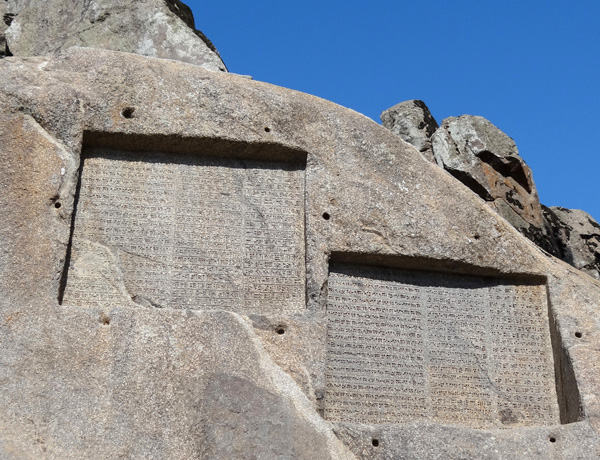The Ganjnameh are set of cuneiform characters written in three languages (ancient Persian, Elamite, and Babylonian), set into a rockface on Mount Alvand, about 5 kilometers from modern-day Hamadan. They were first studied in detail by the French painter and archaeologist Eugene Flandin, who was accompanied by Pascal Coste. Following on their work, Sir Henry Rawlinson, a British explorer, used the inscriptions as a sort of Rosetta stone to descipher the cuneiform characters of the era. The inscriptions proved to belong to the age of Darius I (521-485 BCE) and Xerxes I (485-65 BCE), refuting earlier myths that the inscriptions described the location of buried treasure–hence the name Ganjnameh, or ‘treasure epistle’.
The right inscription, belonging to Xerxes I, reads: “The Great God [is] Ahuramazda, greatest of all the gods, who created the earth and the sky and the people; who made Xerxes king, and outstanding king as outstanding ruler among innumerable rulers; I [am] the great king Xerxes, king of kings, king of lands with numerous inhabitants, king of this vast kingdom with far-away territories, son of the Achaemenid monarch Darius.”
In this context, “God” refers to Ahura Mazda of the Zoroastrian religion.
HAMADAN GANJNAMEH INSCRIPTIONS
December 21, 2021
0 comment

Comment (0)